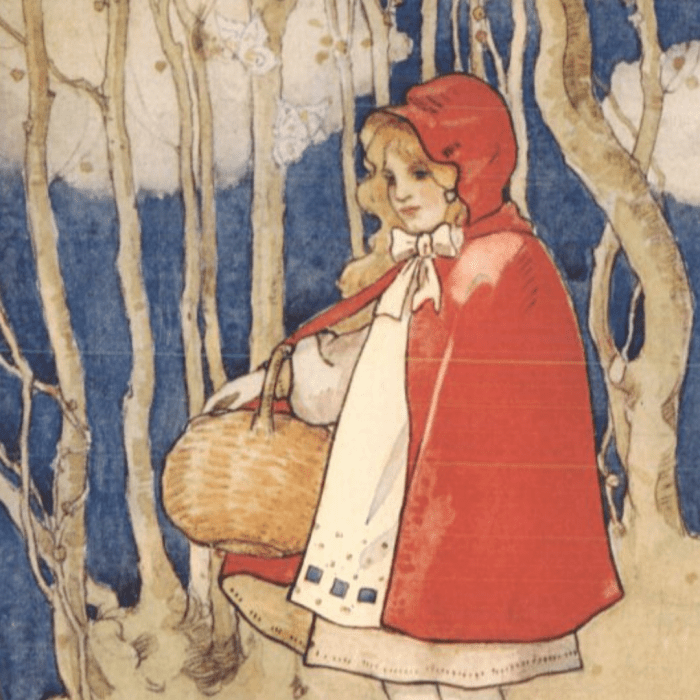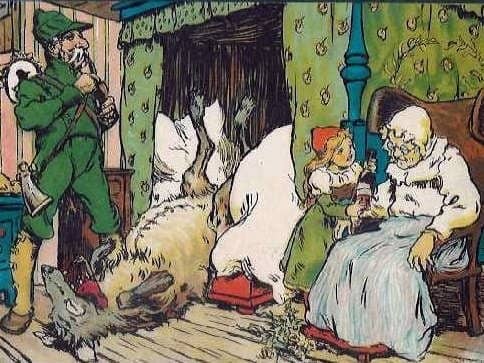Little Red Riding Hood: The Summary and Symbols Explained
Little Red Cap: The Fairy Tale, Historic Background, and Symbolic Power
The Little Red Riding Hood story is among the most popular fairy tales in the world. This is a story about the never-ending fight between good and evil, a story about greed and hope, a story about responsibility and second chances. Red Riding Hood, or Red Cap, is an old tale, known in many different variations. Each one of them can be interpreted in many different ways.
I invite you to join me on the exciting journey through the deep woods to learn the history of the story of Red Cap and its hidden meanings. We'll start with the summary of Little Red Riding Hood and see where this brings us. It is one of the most-studied fairy tales, and I can promise you many interesting revelations if you don't stray from the path like she did!
Red Riding Hood Summary
Once upon a time, there was a little girl. Her grandmother gave her a red riding hood, and the girl loved it so much she wore it all the time—so everybody started to call her Little Red Riding Hood.
One day, her mother told the girl her grandmother had fallen ill. Because she lived alone, deep in the woods, she would probably be happy to get some food and a visit from her granddaughter. Mother gave a basket with food and a bottle of wine to Little Red Riding Hood and told her: "Don't stray from the path!"
The girl promised but soon forgot about her mother's warning. After a while, she met a wolf in the woods. He asked her where she was going, and she told him about her granny's bad health and where she lived. The wolf tricked her into stopping and picking some flowers. She did that, and in the meantime, the wolf ran to the granny's house.

The wolf, dressed in a nightgown, waiting for Little Red Riding Hood to return.
archive.org, author unknown (1860)
The wolf, pretending to be the granddaughter, entered the grandmother's house and ate the lady. Then he dressed in her nightgown and waited for Little Red Riding Hood.
When she came in, the famous dialogue about great arms, great ears, and great teeth followed. After that, the wolf ate the girl and took a nap.
Soon after, a huntsman came by the house and heard snoring. He entered cautiously, saw the sleeping monster in granny's bed and guessed what happened. Then he opened the sleeping wolf's stomach with a knife.
Granny and Red Riding Hood came out and helped the huntsman fill the wolf's stomach with stones. When the wolf woke up, he tried to run away, but the stones were too heavy. He fell down and died. Grandmother, granddaughter, and huntsman lived happily ever after.
Warning: This Happy Ending Isn't in Every Version of the Tale!
Our short summary is of the Brothers Grimm's Red Cap, not Perrault's Little Red Riding Hood. Perrault's is the most popular version of this fairy tale in the world, but many parents still don't think it is appropriate for today's children. It is pretty cruel indeed, and a certain percent of kids can have nightmares after hearing or reading this version.
So let's take a look at Perrault's Little Red Riding Hood (Le Petit Chaperon Rouge)!
What Is Different in Perrault's Version?
The summary of Red Riding Hood is basically the same in both versions. The main difference is the absence of the hunter in Perrault's story: In this case, the story ends when the wolf eats the girl. We read only a conclusion in verse saying not to trust strangers.
Well, this is not the only difference! I will present just a few—some may be negligible at first sight, but if we take a few moments to think them over, we'll notice that every single detail can make a huge difference.
Compare Perrault's and Grimm's Red Cap
- In the beginning of Perrault's story, the mother gives the daughter a basket and sends her to her grandmother with the words: "Do not talk to strangers!" The warning about not leaving the path was an addition by the Grimms.
- The messages of both fairy tales differ. Perrault warns us not to trust strangers and the Brothers Grimm emphasize how important is to stay on the trail.
- The content of the basket is not the same in both cases. Psychoanalysts were especially excited over a bottle of wine added by William Grimm. It is supposed to have a strong symbolic meaning—and we will deal with that later!
- Perrault's Red Riding Hood takes her clothes off and gets into bed with the wolf. The implications are obvious. This version is not appropriate for kids, and it really never was intended for a young audience in the first place. The Grimms' Red Cap doesn't do that: She just approaches the wolf and gets eaten.
Now shall we delve into the symbolism of the story?
Little Red Riding Hood Symbolism (The Hidden Meanings)
Let's go from top to bottom:
The Hood Covering the Hair
If the girl in the story is wearing a hood (or cap), she is obviously covering her hair. Hair, especially women's, plays an important role in many cultures in the world. When a girl reaches the age in which she turns into a woman, her hair is considered one of her most powerful tools for attracting the opposite gender. With covering (or cutting) her hair, she sends a message she is not available yet (or anymore).
The Color Red
When the girl gets a hood from her grandmother, we can say the life forces are passing from older (going) to younger (coming) generation. The red color is, of course, the color of life and blood. It can be easily associated with menstrual blood.
The red color of the hood is an invention of Charles Perrault, and we should know that in the 17th century, a decent woman would never wear a red hood because red was the color of sin. Only ladies with really bad reputations wore red dresses, and Perrault's insinuations were obvious.
The Color Gold (Yes, Gold)
Before the 17th century, the story was already well known. In some versions, the hood wasn't any particular color, but in some, it was gold. Gold, of course, represents maturity and responsibility and at the end of the day, we can say this is what is Little Red Riding Hood all about.
The Basket and the Bottle
What was in Red Riding Hood's basket? Charles Perrault opted for a cake and butter, while the Brothers Grimm gave her some cakes and a bottle of wine.
Erich Fromm explained the bottle in Red Riding Hood's basket as a symbol of virginity. The shape of a bottle is phallic, but as a bottle, it is also fragile and breakable. In a dream analysis, a bottle can also represent suppression of feelings: Instead of letting them out, they are bottled. The bottle also has to be opened (or broken) to release the trapped spirit. Considering that red wine stands for passion, you might say the case of decoding Little Red Riding Hood is almost closed...







